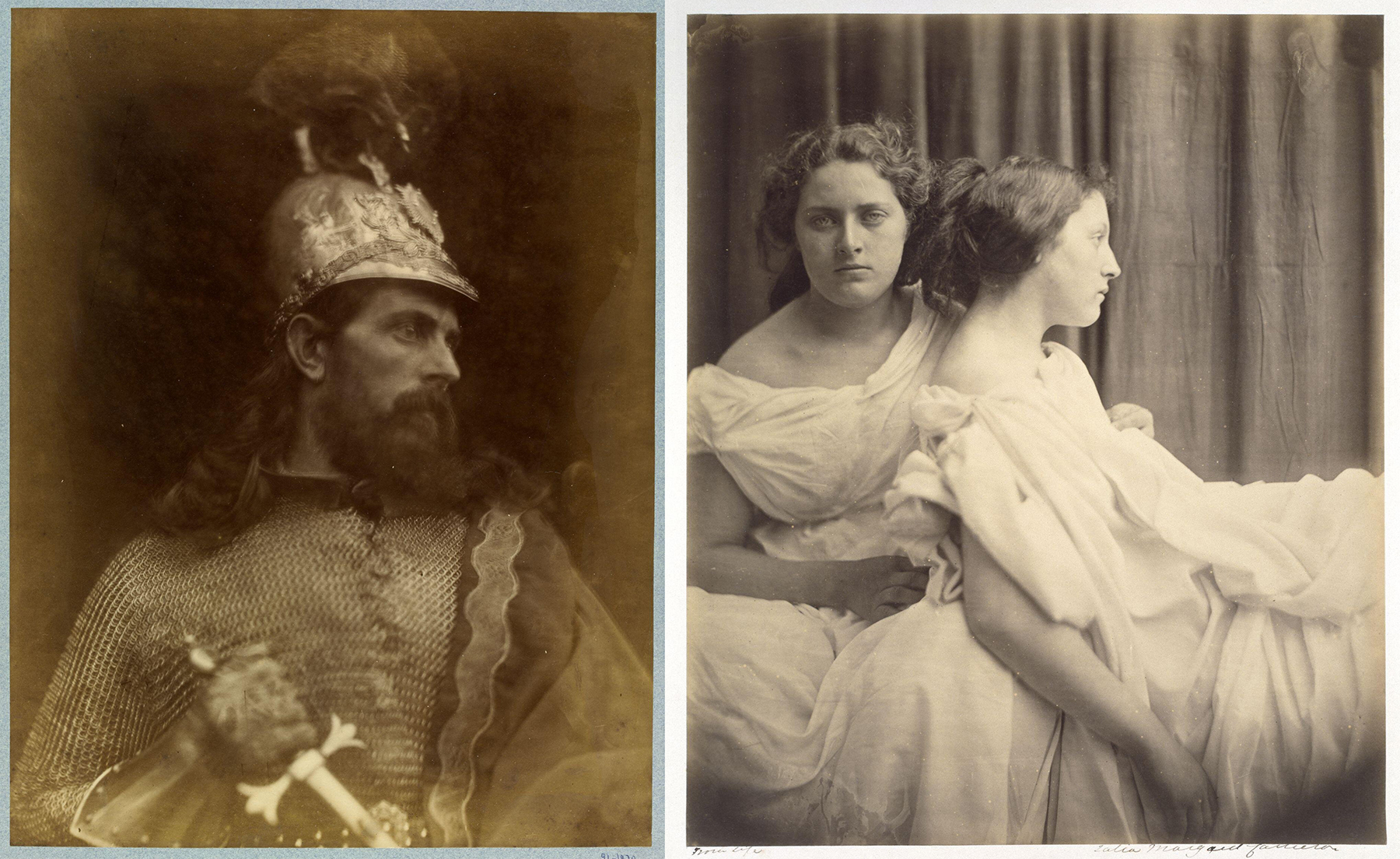High Art and
Hero Worship:
Hero Worship:
THE PHOTOGRAPHY OF JULIA MARGARET CAMERON (1815-1879)
January 26 - March 21, 2023
A virtual exhibition curated by master’s degree students in St. John’s Museum Administration and Public History/Library & Information Sciences programs
Visit the exhibition HERE starting January 26

The Yeh Art Gallery, St. John’s University is pleased to announce the opening of High Art and Hero Worship: The Photography of Julia Margaret Cameron (1815-1879), a virtual exhibition that is accessible on the Yeh Gallery website from January 26-March 21, 2023. The exhibition features thirty works by Victorian photographer Julia Margaret Cameron, and examines her unconventional photography; her personal/professional relationships; and social conventions of Victorian England and British colonialism, which influenced her pioneering work during photography’s early years.
Curated by Amanda DeLisi ’23, Melissa R. Celona ’23, Kristian Laureiro ’23 and Stephanie Paz ’23 the exhibition, which opens on the 144th anniversary of the artist’s death, showcases four key components of Cameron’s vast body of work: portraits of great British men; unique ‘fancy subjects’; famous illustrations of Alfred Tennyson’s Idylls of the King, and documentary-like photographs of Ceylonese (now, Sri Lankan) people. A virtual curator-led guided walk-through tour will take place on February 23, 2023, at 7pm. Register here.
As DeLisi explains, “We put a lot of effort into collaborating and figuring out how these many-themed photographs connect. We hope this exhibition tells a full and cohesive story of Cameron’s life and works, and how they played off one another in the cultivation of her creative process and as commentary on Victorian England.”
Cameron’s fifteen-year career with a camera began in 1863, when she was forty-eight years old. Until her passing in 1879, she photographed an astonishing number of celebrity men, including poet Alfred Tennyson, scientist Charles Darwin, artist Frederick Watts, as well as Baron Samuel Jones-Lloyd (known politically as Lord Overstone). Her approach to photography was, at the time, controversial. While she had astounding social connections, her passion was founded in the artistic movement of the Pre-Raphaelite painters, a collective seeking to reinvigorate the styles of Late Medieval and Early Renaissance art.
This led to Cameron’s creation of ‘fancy subjects’—an attempt to emulate “High Art” for which she used models, props and staged compositions. Her chief inspirations were plays, novels, classic art and sculpture, mythology, and the writings of her poet friend Alfred Tennyson. Her career culminated with illustrations to his Idylls of the King and Other poems, photographs inspired by twelve poems Tennyson wrote, modernizing the legend of King Arthur. In her last years, Cameron moved to the Island of Ceylon (now, modern-day Sri Lanka), where her family had owned coffee plantations for decades. Removed from the society England, she produced a unique series of documentary-like photographs of the indigenous working classes of the British territory.
As student Melissa R. Celona states, “While her work is peppered with commentary on Victorian society, these final photographs offer another look into her life, both as an upper-class woman and participant in colonial oppression. As much as she was smart and charismatic, with a quirky and eccentric personality, she was also part of a larger society of elitism. These photographs show this deeper narrative and give identity back to people who will forever go unnamed.”
Exploring the life and work of Julia Margaret Cameron, this exhibition seeks to answer the oldest photography question: How truthful can a photograph be? Through the various subjects she photographed, her methods of production and staging, and a closer look at the subtext of her era, this exhibition brings Cameron’s work into the twenty-first century and highlights issues of wealth disparity and colonialism in Victorian England.
You can find more information about the M.A. Museum Administration program here. Or contact the program’s founding director/coordinator, Dr. Susan Rosenberg (rosenbs3@stjohns.edu).
Photography Credits:
(Left) Julia Margaret Cameron (1815-1879), King Arthur, 1874, Albumen print from wet collodion glass negative, 35cm x 27.5cm. Victoria & Albert Museum, London.
(Right) Julia Margaret Cameron (1815-1879), 2d. Version of Study after the Elgin Marbles, 1867, Albumen print from wet collodion glass negative, 58.2 x 46.5 cm. Victoria & Albert Museum, London.